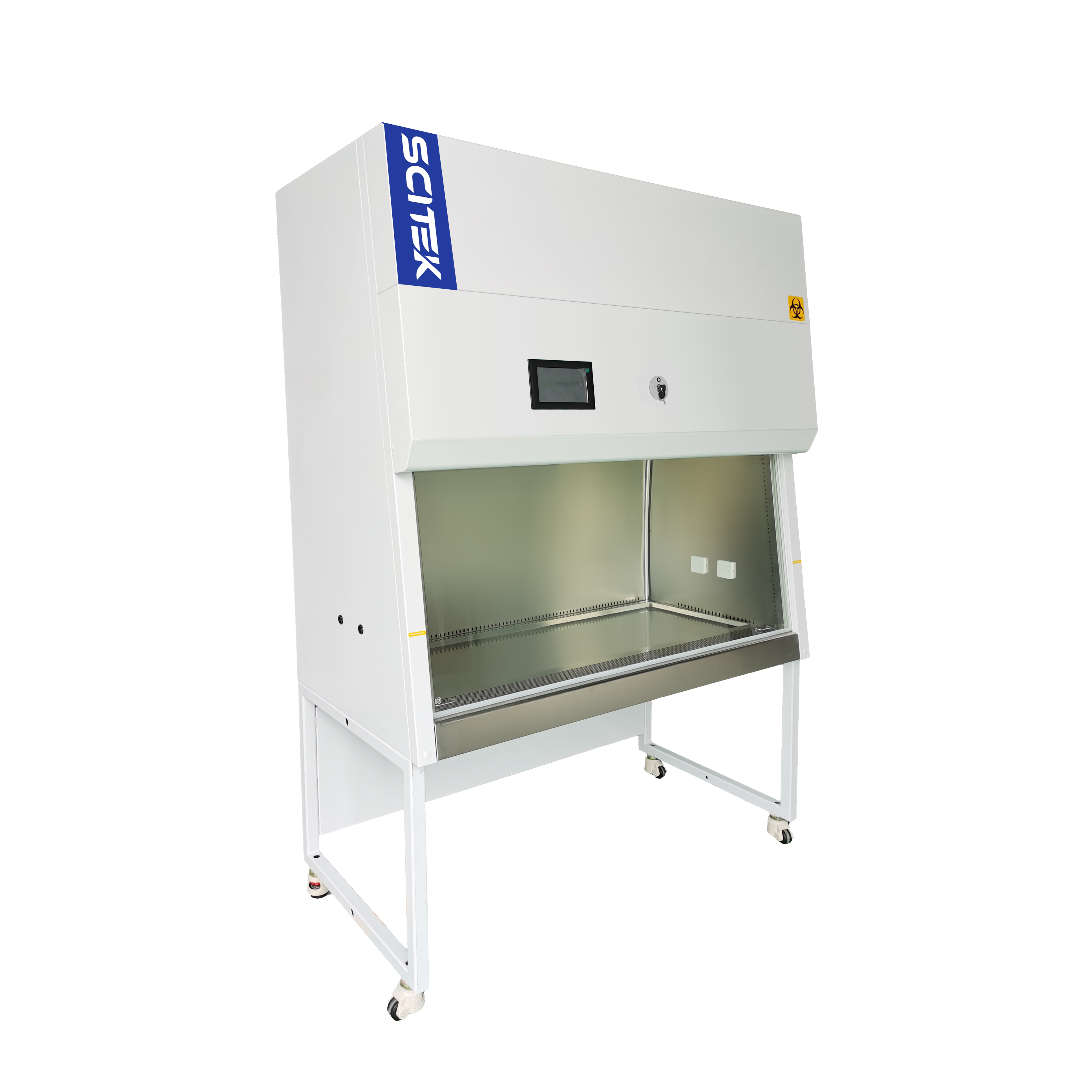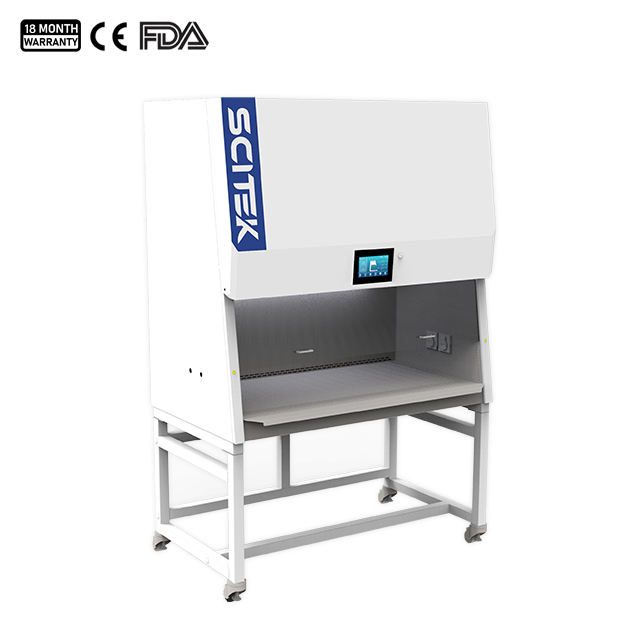Biological safety cabinets are vital in scientific research and experimentation. Biological safety cabinets are indispensable tools for professionals in a variety of scientific disciplines, from biomedical research to clinical diagnostics. They provide a controlled environment that minimizes the risk of contamination, exposure, and accidental release of hazardous substances. This guide begins with an overview of a BSC, clarifying the different types and classifications available.
What is a Biological Safety Cabinet?
A biological safety cabinet, also known as a BSC, is a piece of equipment specifically designed to remove biological samples and other potentially hazardous substances from a laboratory environment. They are commonly used to protect laboratory personnel, the laboratory environment and the external environment from biological hazards. They are widely used in laboratories in medicine, biology, pharmaceuticals, biotechnology and other scientific fields.
What is the purpose of a biosafety cabinet?
You may be wondering. Biosafety cabinets protect people and the environment in laboratories from harmful microorganisms. They are also used for specific purposes for risky microorganisms and procedures that may lead to aerosol production.
HEPA filters are installed in biological safety cabinets to purify the air leaving the cabinet. Many people often confuse it with the laminar flow cabinet and can't tell the difference, even thinking they are laboratory tools for the same purpose. However, a laminar flow cabinet only protects the sample, whereas a biosafety cabinet protects the sample, the operator, and the surrounding environment.
In summary, biosafety cabinets play a key role in laboratories, providing the necessary safeguards for scientific research and experimentation.
Types of Biosafety Cabinets
The U.S. centers for disease control and prevention (CDC) classifies biosafety cabinets into three categories, each with its own operational characteristics and uses.
Biosafety Cabinets Class I :
Biosafety cabinets class I provide basic protection for the environment and laboratory workers but do not protect products.
Air Flow: Biosafety cabinets class I are generally classified as ducted or non-ducted. Ducted models work by pulling air out of the work area and filtering it through a HEPA filter before venting it outside the lab, thus protecting lab workers and the lab environment from contamination. Ductless cabinets work by filtering the air and circulating it back into the laboratory.
Uses: For experiments requiring basic protection, such as biological sample handling, bacterial culture and chemical reagent manipulation.
Class II Biosafety Cabinets:
Features: Biosafety cabinets class II provide a higher level of protection and are suitable for handling highly hazardous biological materials and microorganisms. Class II biosafety cabinets are subdivided into five different types of BSC Class II depending on the exhaust system and the mode of operation (exhaust gas recirculation): Type A1, Type A2, Type B1, Type B2 and Type C1.
BSC A1
Contaminants are separated above the workstation and mixed with intake air from the cabinet A1, which has a minimum intake velocity of 75 feet per minute. The mixed air is then sent back into the cabinet through the ductwork. The air can then be recirculated as it passes through the HEPA filter, or it can be exhausted from the cabinet after passing through the HEPA filter. This type of cabinet is generally seldom used because it is required for handling hazardous chemical chemicals.
BSC A2
The biosafety cabinet class II A2 has a minimum air intake velocity of 100 feet per minute.The BSC A2 has a vertical downward clean air flow pattern. This design allows a portion of the air to be blown downward from the work area, while the other portion is exhausted externally through the front window to effectively isolate the operating area from the outside environment.

Biological Safety Cabinet Class II A2
External Size (W×D×H) : 1500x750x2250mm
Tested Opening Safety Height : 200mm (8”)
Max.Opening : 440mm
Downflow Velocity : 0.33±0.025m/s
Inflow Velocity : 0.53±0.025m/s
BSC B1
The BSC B1 differs from the Type A cabinet in that the Type B cabinet uses a separate airflow system to regulate the flow of hazardous vapours. Contaminated air is sent to the BSC B1 cabinet's exhaust system, while the air between the controller and the workstations mixes with the incoming air and is redistributed. In the B1 cabinet, 40 per cent of the air is recycled while the remaining 60 per cent is exhausted.
BSC B2
The biosafety cabinet class II B2 is similar to the Type A cabinet in that air enters through a hole in the top of the cabinet. After passing through a HEPA filter, the air is completely exhausted through a special duct system with an exhaust fan motor. The advantage of the biosafety cabinet class II B2 is that toxic vapours generated inside the cabinet can be removed without recirculation within the BSC. In a B2 cabinet, 100% of the air entering the cabinet is vented to the environment.
Neither incoming nor outgoing air is recycled within the B2 airflow system. Therefore the biosafety cabinet class II B2 is ideally suited for work where chemical vapours are emitted and air is not recirculated.

Biological Safety Cabinet Class II B2
Tested Opening Safety Height : 200mm (8”)
Max.Opening : 400mm
Work Surface Height : 800mm
Airflow System : 100% air exhaust
Downflow Velocity : 0.34m/s
Inflow Velocity : 0.55m/s
BSC C1
Biosafety cabinets class II C1 have the same functional mechanism as Type B cabinets, but they are less expensive and increase laboratory flexibility. Unlike Type A cabinets, Type C cabinets have a separate airflow system that does not exchange airflow. These cabinets operate on a single-pass airflow system that involves mixing upflow air with downflow air and recirculating it in columns. An auxiliary fan draws air in from above the workstation and the contaminated air is exhausted through a HEPA filter in the exhaust duct. Commonly used for highly hazardous experiments such as handling highly pathogenic biological materials, conducting biodefence research and responding to bioterrorist attacks.
Overall, the types and classes of biosafety cabinets are classified according to the level of protection they provide and their operational characteristics to meet different experimental needs and biosafety levels.
Biosafety Cabinets Class III
Biosafety cabinets Class III are enclosed but ventilated leak-proof cabinets in which all air entering or leaving the facility is passed through a HEPA filter. Rubber gloves are attached to the equipment and supplied with the cabinet for cabinet operation. For this reason, these cabinets are often referred to as "glove boxes".
The cabinets even contain a transfer room where items can be sterilised before leaving the glove box. Although gloves limit the operator's hand movement inside the cabinet, they prevent contact between the controller and the sample. Dual HEPA filters or HEPA filters combined with cremation are used to purify the exhaust air.
Conclusion
The importance of following best safety practices in laboratory operations. For beginners and experienced researchers alike, safety should always be a top priority. Understanding that biosafety cabinets can protect not only ourselves, but also our colleagues, the laboratory and the environment, provides a reliable safeguard for our scientific work.

 English
English












